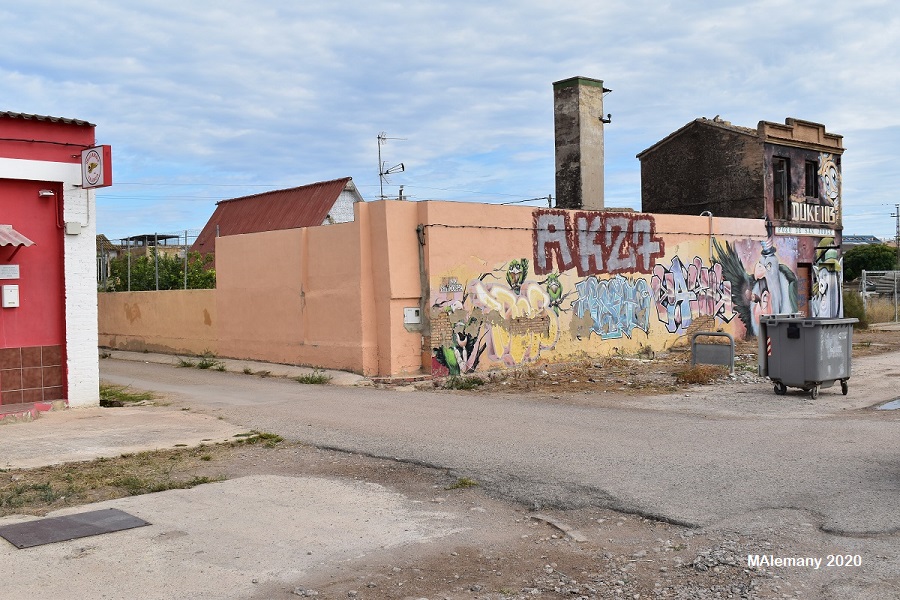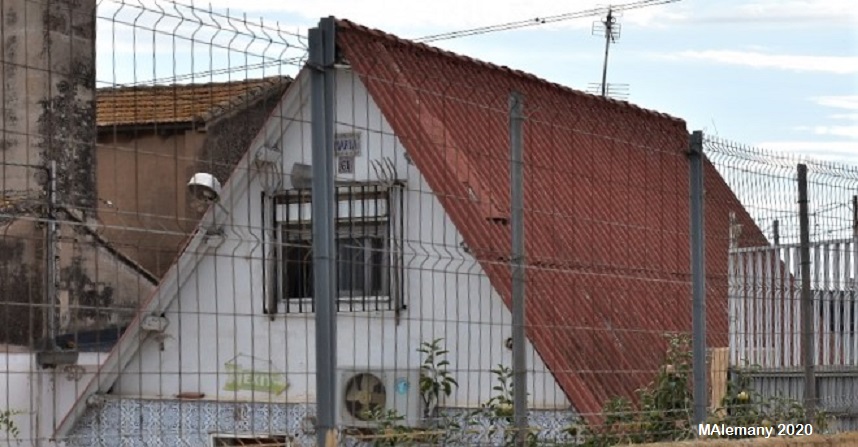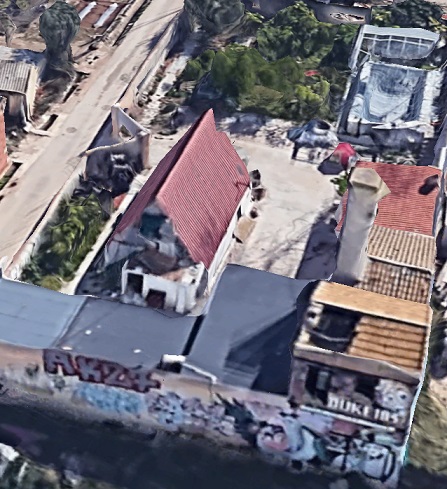
It can be reached by the CV-400 road heading south until the crossroads with the CV-4041 road and then return towards València until the former Picassent road, now called Séquia de Favara street, is found, and then take it towards Benetússer. It is on the left-hand side, between houses.
The barraca (hut) has undergone considerable modifications as a result of having been restored as a residence. The surroundings are also quite degraded.
19th century.
According to J. A. García Esparza (2012), this barraca (hut) would be approximately one hundred and fifty or two hundred years old. As in the case of many of these popular buildings in l’Horta (the irrigated land of València), it is not easy to give a more concrete chronology. As in the whole of the periphery of the city of València, many of these barraques (huts) were built during the 19th or early 20th century, even with possible important modifications on the same site. These barraques do not usually appear in the documents of the past centuries in an identifiable form by names or place names, while at an oral level they were usually known in their surroundings by the name or nickname of the people who owned or lived there. For this reason, the name of the barraca was frequently modified due to the change of residence of these people, and it is difficult to determine the specific history of the owners, works, etc., without family witnesses or neighbours.
This barraca (hut) is located in a semi-urbanised area to the south of the city of València, in the rural district of Sant Jordi, to the south of the village of La Punta, near the old Picassent road and the route of the Favara irrigation canal. Nevertheless, today this irrigated area has receded considerably, dismembered into sections by the layout of the roads and motorways that surround it. Also, around the barraca there has been an increase in compact constructions in groups, giving it a semi-urban air, although the survival of cultivated fields next to it. In this case, the barraca has undergone transformations of a certain magnitude. According to J. A. García Esparza (2012), it is built of adobe but with a relevant use of concrete blocks and tiles. As for its exterior, it was plastered but was later painted white and, in some parts covered with ceramic tiles. The openings (door and windows) have also been changed and new ones have been opened, both with modern aluminium carpentry. In fact, the entrance door has been considerably enlarged and a large aluminium window has also been opened on the first floor. As the roof has also been changed and replaced by large sheets of fibre concrete in a striking maroon-red colour, it is likely that its joists are not the original ones either. It has a rectangular floor plan, with a floor area of 46.5 m2 (500.5ft2), a front area of 5.40 m (17ft 8.5in) wide and a depth of 9.54 m (31ft 3.5in) in length, while the height is 6.30 m (20ft 8in). It is currently supplied with electricity and water from a well and from the public water supply.
- Bé Immoble de Rellevància Local (BRL-BRR), per defecte: “les barraques tradicionals de la comarca de l’Horta de València”. Disposició addicional quinta de la Llei 5/2007, de 9 de febrer, de modificació de la Llei 4/1998, de 11 de juny, del Patrimoni Cultural Valencià.
- Bé Immoble de Rellevància Local (BRL-BRR), per defecte: “les barraques tradicionals pròpies de les hortes valencianes”. Article 4 de la Llei 9/2017, de 7 d’abril, de modificació de la Llei 4/1998, del Patrimoni Cultural Valencià.
GARCÍA ESPARZA, J. A.(2012): Barracas del litoral mediterráneo. Catálogo de Valencia y su entorno, Castelló, Publicacions de la Universitat Jaume I, pp. 196-197.
DEL REY, M. (2010): Arquitectura Rural Valenciana, Barcelona: Galerada (1ª edició: València: Direcció General de Patrimoni Artístic, 1996).
GÓMEZ MATAIX, G. (2016): “De la esfera simbólica al catálogo arquitectónico: Atlas visual de la barraca de la Huerta de Valencia”, Revista Valenciana d’Etnologia, n. 8, pp. 115-152.
GARCÍA ESPARZA, J. A. (2008): “La barraca valenciana, procesos de transformación”, Revista Valenciana d’Etnologia, n. 3, pp. 145-159.
CRUZ OROZCO, J. (2003): “Las viviendas de cubierta vegetal en el territorio valenciano: el caso de la barraca”, Revista El Pajar: Cuaderno de Etnografía Canaria, n. 14, pp. 111-116.
SANCHIS GUARNER, M. (1957): Les barraques valencianes, Barcelona, Ed. Barcino (reedició: València, Institució Alfons el Magnànim, 1999).
ALMELA VIVES, F. (1960): La vivienda rural valenciana, Valencia, La Semana Gráfica.
CASAS TORRES, J. M. (1944): La vivienda y los núcleos rurales de la huerta de Valencia, València, Diputació Provincial de València.
RUIZ RUBIO, J. V. (1999): Construint una barraca valenciana, València, Ajuntament d’Alboraia-Col·legi d’Aparelladors i Arquitectes Tècnics de València-Col·legi d’Arquitectes de la Comunitat Valenciana.
GOSÁLVEZ, V.(1915): Estudio constructivo de la Barraca de la Vega Valenciana, Tema de investigación presentado al tribunal de oposiciones. Manuscrito. Biblioteca del COAV. València (Facsimil de: “La Barraca Valenciana”, COACV-Colegio Oficial de Arquitectos de la Comunidad Valenciana, 1998).
Photos: M. Alemany

















